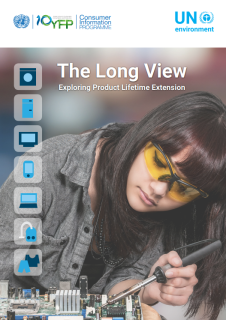
Through product lifetime extension, the rate at which we use up (natural) resources and produce waste can be radically reduced, while the economic value embedded in our products is preserved as much as possible. This is, in theory, a win-win situation for both the environment and the economy (businesses save on costs and consumers get better value for money).
The report investigates several ways to extend the useful lives of products:
- by simply using products for a long(er) time,
- by extending their use through design, maintenance and upgrades, and/or
- by recovering broken products through repair, refurbishment or remanufacturing.
Seven products representing different lifetime expectancies by consumers for their optimal replacement moments and actual lifetimes in selected countries were analysed: washing machines, refrigerators, TVs, mobile phones, laptops and clothing. The report provides three policy perspectives, two for developed and one for developing countries, for designing measures to address product lifetime extension. The following case studies are:
- Caterpillar: a case study on remanufacturing
- Geração Ecotrônicos: a case study on repair and recovery
- Neptuno Pumps: a case study on remanufacturing
- OLX Brazil: a case study on second-hand market
- Refazenda: a case study on upcycling
- Retalhar: a case study on upcyling
- Swane Design: a case study on upcycling
